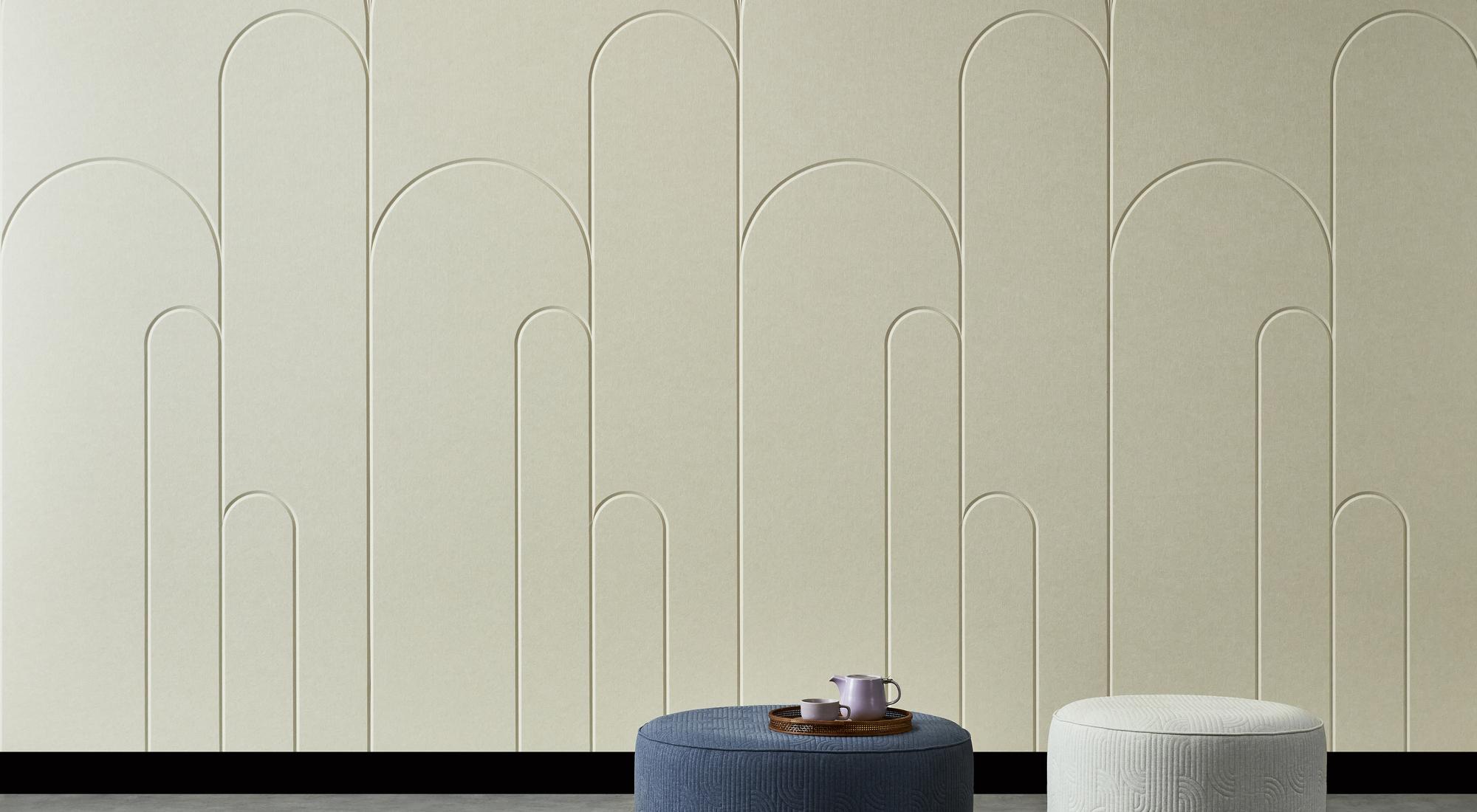Since 1987, Woven Image have been supplying the built environment with sustainable, design-led acoustic finishes and textiles.

Benefits
Are Acoustic Panels Worthwhile?
The question is simple, and all you need to do is answer it: Have you noticed any of the following issues?
-
Lower customer experience due to poor acoustics in a venue
-
Reduced productivity due to distracted employees/students
-
High noise levels can be stressful and harmful to health
-
Conversations easily overheard
If your answer is yes, then you have found a solution! Whether you want to improve communication in a busy office, create a conducive learning environment in schools, establish a comfortable and productive environment for both customers and employees, or prevent conversations from being overheard, acoustic panels are a practical and worthwhile solution.
Effective
Are Acoustic Panels Effective?
Absolutely! Our acoustic panels are highly effective at reducing noise, echoes, and other sound issues in your space. The effectiveness of acoustic panels can vary between brands and product lines, so be sure to check the Noise Reduction Coefficient (NRC) in the data sheet for each panel you're interested in. At Acoustics by Specfurn, all our panels offer excellent noise reduction properties. Check the data sheet for each product to assess its noise control potential:
-
Weak NRC 0.1 - 0.3
-
Moderate NRC 0.4 - 0.6
-
High NRC 0.7 - 0.9+


How
How Do Acoustic Panels Work?
Acoustic panels are designed to diffuse, absorb, or reflect noise in a room.
Primarily, they excel at absorbing sound, countering echoes caused by hard surfaces in rooms. Hard surfaces, like those in tiled bathrooms, reflect sound waves without reducing their speed, leading to an echo effect. Acoustic panels absorb these sound waves, preventing them from reverberating and improving speech clarity.
The three main types of acoustic panels are:
Absorptive panels – Made of soft materials like cotton or polyester, these panels absorb sound waves, converting them into minimal heat energy. They are common in offices and classrooms to reduce echo and reverberation.
Diffusive panels – Featuring unique shapes, these panels scatter sound waves in various directions, reducing sound intensity as it bounces off multiple surfaces. Combining absorptive and diffusive panels can enhance their effectiveness.
Reflective panels – Constructed from hard materials like metal or glass, these panels deflect sound waves away. They are typically used in recording studios and venues requiring soundproofing but are less common in commercial spaces due to their limited effectiveness.
Sustainability
Woven Image Sustainability Journey
Since 2004, Woven Image has been dedicated to producing high-performance acoustic finishes and textiles using recycled materials. Tonnes of PET plastic have been recycled to create their acoustic product.
Their commitment to sustainability has led them on a journey that has become a global necessity. They will continue to work towards reducing the environmental and social impact of their products and operations.
Application
Understanding Acoustic Panels and Their Application
Room suitability Acoustic panels for walls work superbly well in most commercial spaces. If you have a room with hardwood floors, concrete walls, or lots of windows, acoustic panels will help to reduce the amount of echo and reverberation in the space. Acoustic panels are also ideal for commercial office spaces, conference rooms, and reception areas. If you have a room that is specifically designed for music listening or recording, acoustic panels can help to improve the quality of sound in the space.
How Many Panels Do I Need? The number of acoustic panels you will need will depend on the size of the room and the amount of noise you would like to reduce. In general, you will need one panel for every 4-5 square feet of wall space. If you are trying to reduce a considerable amount of noise, you may need more panels. Our team can help you determine how many panels you will need for your specific space and needs. Acoustic panels also exist for ceilings. Ceiling acoustic panels are a great way to reduce noise in a room with a high ceiling. If you have a room with a lot of echo, such as a gymnasium or an auditorium, acoustic panels can help to reduce the amount of reverberation in the space.
facts about acoustics
Here's why you should invest in acoustic treatment
80%
Of people have left a restaurant because it was too noisy.
1 in 4
Words go unheard in teaching environments.
86 Mins
A day is lost to noise distractions in open plan offices.
Acoustics by Specfurn









